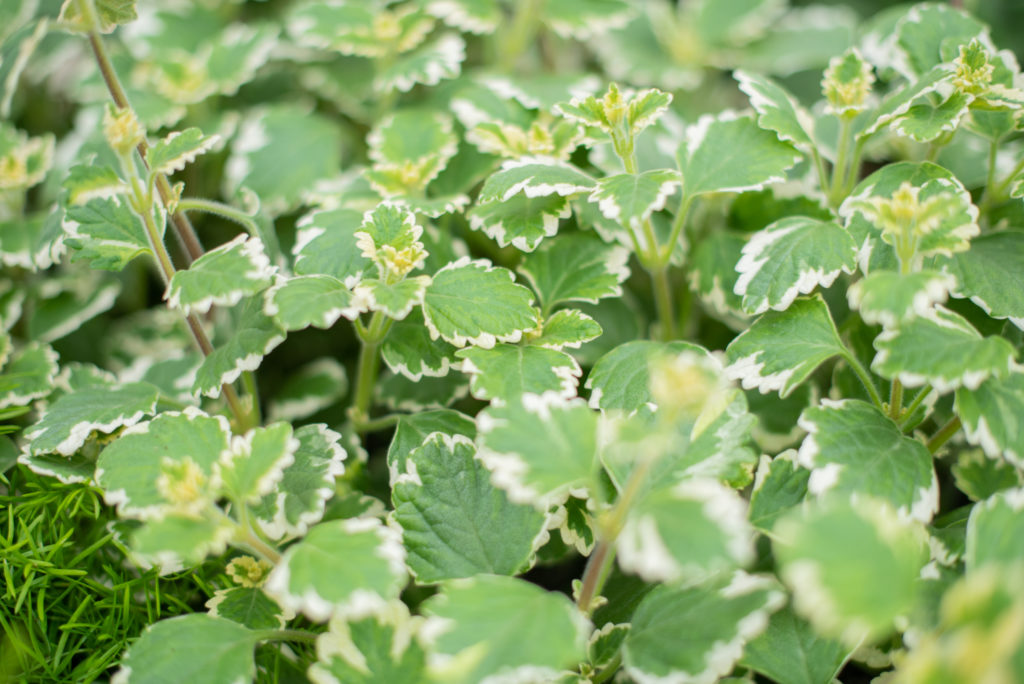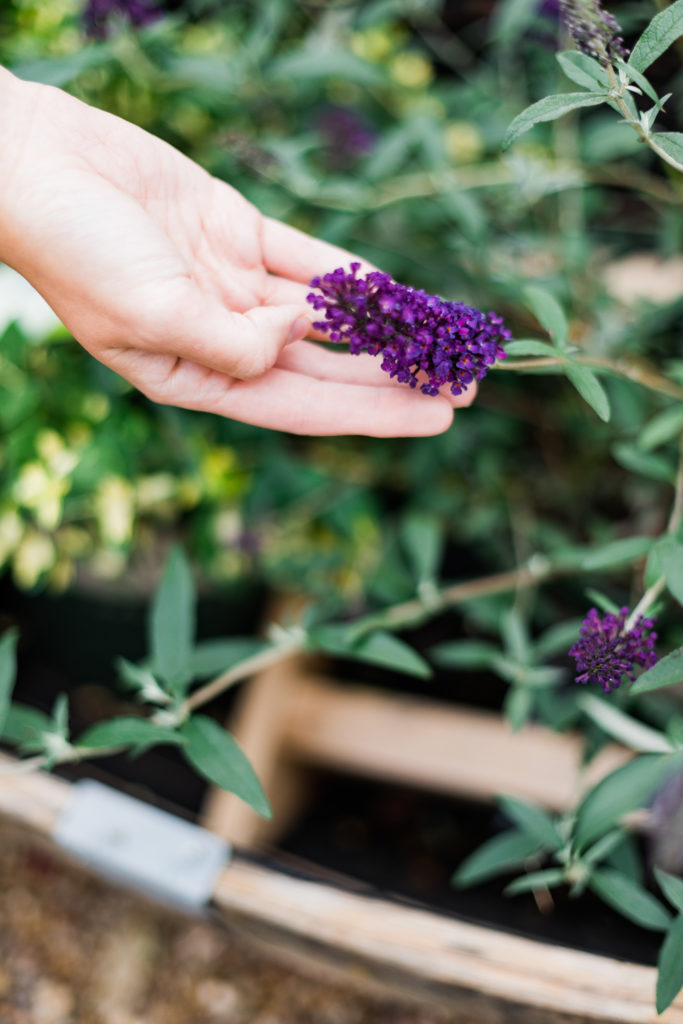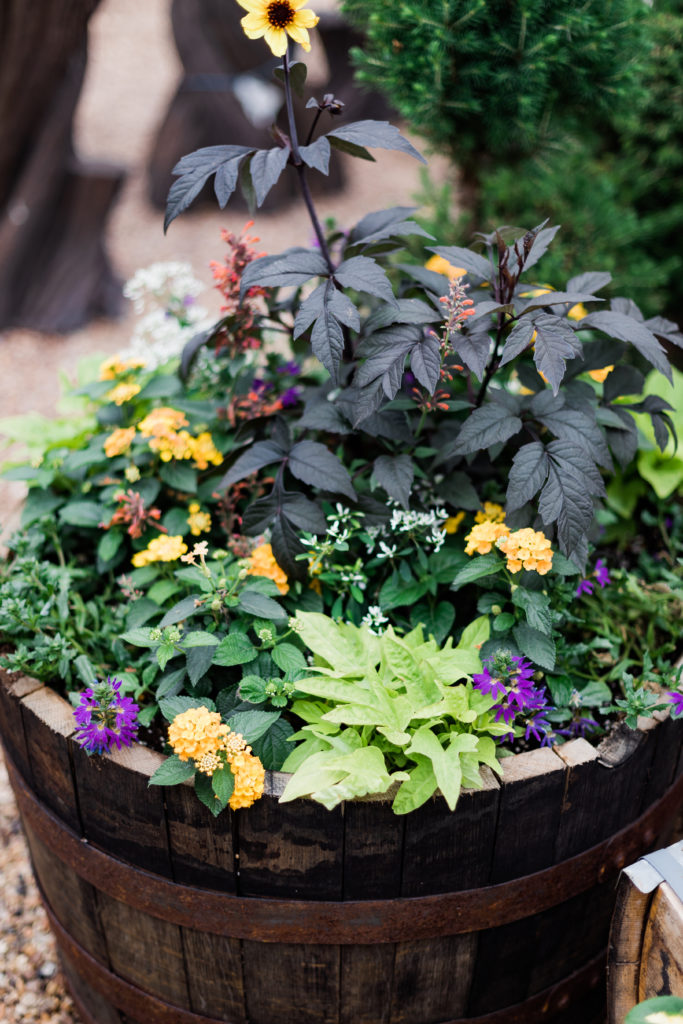
Nothing spruces up an outdoor space quite like the bright colors and various textures of plants combined in planters and flower beds. The question for many of us, though, is, “Which plants go together and where is best to get the optimum growth out of them?”. The answer to this question is not as complicated as you might think, but there are multiple ways to achieve a beautiful outdoor garden space depending on how much sun/shade you have and which plants you like best!
For many of us, feeling good about your outdoor space goes beyond simply grabbing a couple geraniums and a few pink wax begonias. Our pots and planters need panache! So this spring, before you head out to buy plants for your porch, deck or patio, let us help you learn what it takes to create planters and flower beds with style.
Chances are, the gardener who planted up that beautiful pot may have shopped at the very same nursery as you. They may have traveled down the same aisles and may have chosen among the same 200 kinds of plants and 10,000 possible plant combinations.
The trick is all in the choosing.
Sun Planters
Let’s start with planters that get lots of good sun (6+ hours a day). There are three key words to remember when choosing plants for these planters: height, filler, and trailing, otherwise known to us in the gardening world as thrillers, fillers, and spillers. Thrillers are usually vertical, fillers tend to be horizontal and weaving, and spillers are cascading.

Height
For height, small grasses are great for creating intrigue and contrast.
Dracaena Spike
Salvia
Angelonia
Prince Tut
King Tut
Filler
We want to encourage you to consider the growing conditions of your planters and beds as you choose your plants. If you fill a window box with shade-loving impatiens and then put it in a sunny, west-facing location, those impatiens will struggle to survive. You will also fail if you try to grow sun-loving ivy geraniums on a shady porch. Think about where the pot will be located and then select plants that will like living there. Plant labels usually list sun/shade requirements, so make sure to read over those or ask one of our gardening experts before you purchase your plants!
A well-composed container can be as visually stimulating as a great painting. Generate energy and excitement by combining complementary colors such as purple and orange or yellow and blue. Or paint a more visually soothing composition by limiting yourself to related colors such as blues and pinks or reds and yellows. You can also create a stunning, very sophisticated look using nothing but greens, whites and silvers.
When selecting flower and foliage colors, you may also want to think about the color of your house, the color of your deck or patio pavers, and the color in adjacent beds and borders. That said, pots and planters present a great opportunity to experiment with dramatic color combinations that you’d probably never dare to use in your permanent landscape.
So, if you’re looking for filler plants for your planter that gets 6+ hours of good sun, here are some suggestions for you.

Geraniums
Petunias
Calibrachoa
Sunpatiens
Marigolds
Portulaca
Euphorbia
Lantana
Trailing
One of the best but often underrated elements for containers are trailing plants. Whether it’s hanging baskets or large patio pots, it’s so lovely seeing plants tumbling over the edge like they’re sneaking off to find even more places in your yard to grow. Trailing plants can really elevate style for pots and containers, and here are several we recommend for your containers getting 6+ hours of sun.

Verbena
Sweet Potato Vine
Lobularia
Lobelia
Scaevola
Partial Sun Planters
Many gardeners ask the question; are part sun and part shade the same? While partial sun and partial shade are often used interchangeably, there is a fine line between the two. Partial sun generally means less than six and more than four hours of sun per day. Plants for partial sun will do well in a location where they receive a break from the sun each day. In other words, they like the sun but will not tolerate a full day of it and need at least some shade each day. Here are some of our favorite plants that are perfect for your containers getting partial sun.

Height
Caladium
Coleus
Kimberly Queen
Dracaena Spike
Prince Tut
King Tut
Heuchera
Filler

Sunpatiens/Impatiens
Begonias
Euphorbia
Fiber Optic Grass
Hypoestes

Trailing
Sweet Potato Vine
Swedish Ivy
Dichondra
Plectranthus
Moneywort
Bacopa

Shade Pots
When we think of shade plants, we often picture lush plants with deep green foliage and very few flowers. The truth is: there are some very showy, colorful and easy care shade loving plants that will add much needed vibrant colors and cheerfulness to a dark shady spot, such as a covered patio, or the north side of your house. Here are a few of our suggestions:

Height
Ferns
Spiralis
Sansevieria
Caladium
Elephant Ear
Hosta

Filler
Impatiens
Begonias
Euphorbia
New Guinea Impatiens
Shade Coleus

Trailing
Vinca Minor
Moneywort
Silverfalls Dichondra
Lamium
Fuschia
Shade Beds
Let’s move on from discussing pots and containers and move on to what you should plant in your flower beds, depending on the amount of sun/shade you get. Searching for plants that grow in full shade is a job filled with challenges. The challenges begin with the definitions of sunlight requirements, so the relevant terms need to be discussed first, starting with the definition of full shade.
The term full shade does not mean no sun. For horticultural purposes, a location is considered to be in full shade if it receives less than four hours of direct sun daily and receives filtered sun the rest of the day. Preferably, the hours of direct sun occur in the cooler hours of the morning with filtered protection from intense sun in the late afternoon.
Below are a list of shrubs we recommend for full shade beds:
Dense Yews
Nelly Stevens Holly
Boxwoods
Colonnade Holly
Pencil Holly
And here are our recommendations for perennials that will thrive in your full shade beds:

Hostas
Jacob’s Ladder
Heuchera
Lamium
Ajuga
Sweet Woodruff
Campanula
Sun Beds
Creating a full-sun garden starts with understanding what “full sun” means. Light levels can be confusing, especially when you’re faced with plant tags or descriptions that read “full sun” or “partial sun” and nothing more. Plant professionals (and the companies that print plant catalogs and tags) typically define full sun as six to eight hours of direct sun or more each day. Partial sun refers to areas that receive between four and six hours of direct daily sun.
When planning a sunny garden, take time to track the actual amount of direct, unfiltered sun your garden spot receives. It may surprise you. Nearby plants, trees and buildings can shade sunny areas as the sun moves through the sky each day.
If you’re an outdoor person, you understand that morning rays are gentler than midday sun, so keep that difference in mind as well. Shorter hours of intense sun can have an impact similar to longer hours of less intense rays.
Here are several of our suggestions for shrubs in your beds receiving full sun:
Euonymus
Nelly Stevens Holly
Boxwoods
Abelia
Barberry
Butterfly Bush
Blue Spruce
Dwarf Yaupon

And here are some of our favorite perennials, perfect for your sunny flower beds:
Russian Sage
Coneflowers
Guara
Shasta Daisies
Dianthus
Coreopsis
Hardy Hibiscus
Red Hot Poker
May Night Salvia
Furman Salvia
Karl Foerster
Hameln
Pampas Grass
Rudbeckia
Catmint
Gaillardia
Sedum

During your search for the right plants you may find yourself checking the information on the plant tags. Remember that here in the Texas Panhandle, our technical zone is 6B.
The possibilities are endless when it comes to enhancing your landscape. Make a list of your favorite varieties of plants and flowers you enjoy, then add plants gradually over time as you get a feel for your outdoor space. Taking walks around your neighborhood is a good way to find inspiration. And as always, the gardening experts here at Pete’s are always happy to help you as you grow and improve your outdoor space!
You can download our helpful plant guide here.

Leave a Reply Cancel reply
workshop tickets
MON - SAT 9:00AM TO 6:00PM
Site Design by Hatched Studio
ABOUT PETE'S
GARDEN & GREENHOUSE
hOME & GIFTS
outdoor living
FIND US
7300 CANYON DRIVE
AMARILLO, TX 79119
806.352.1664
A Panhandle based gift shop and greenhouse. Passionately providing the feeling of home for 49 years.